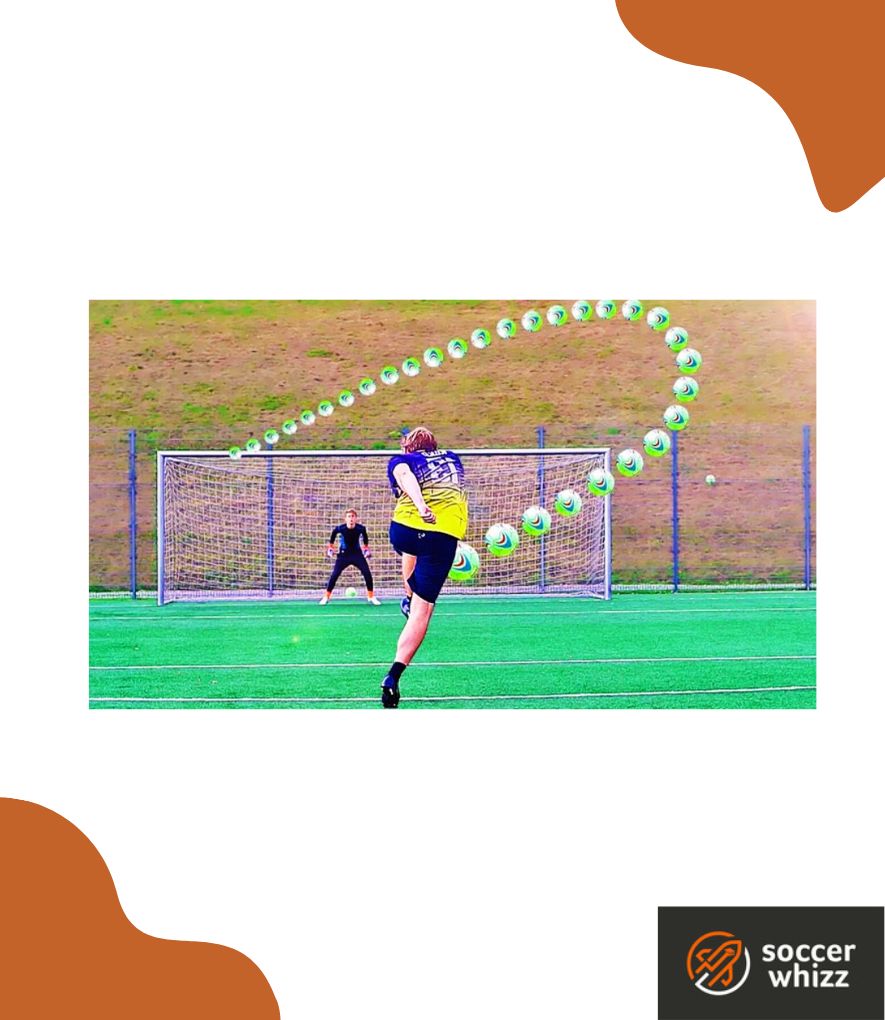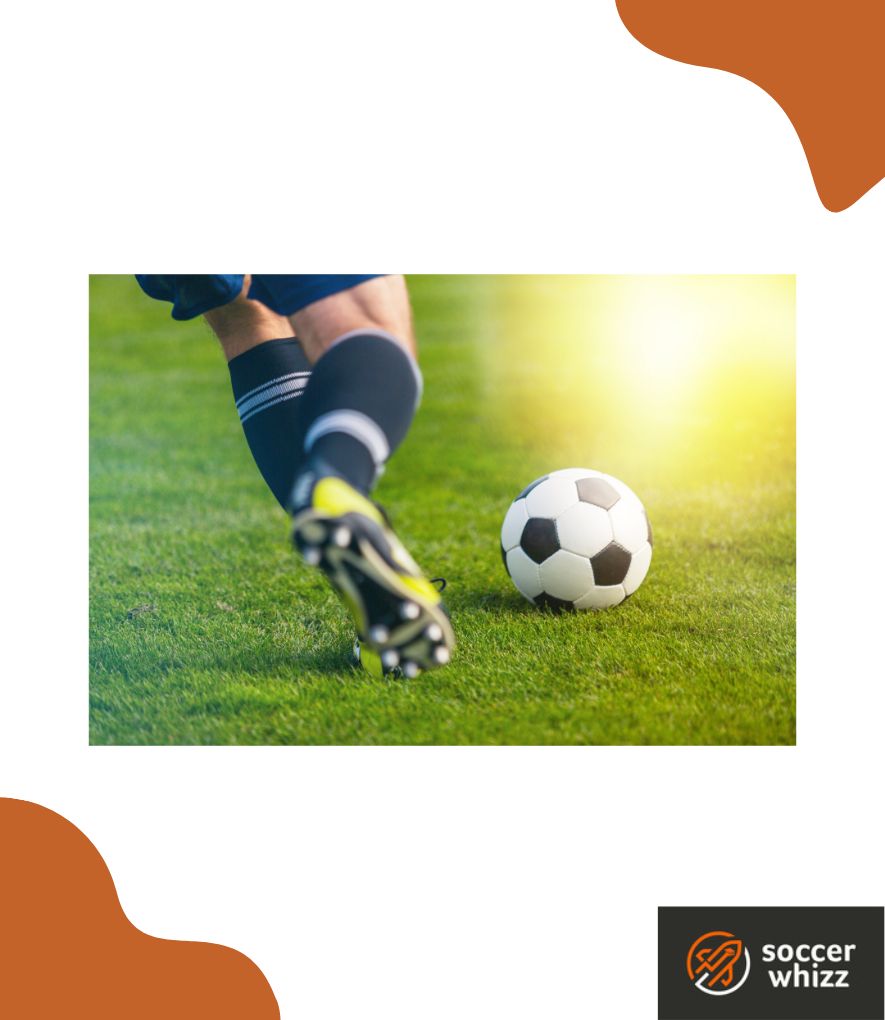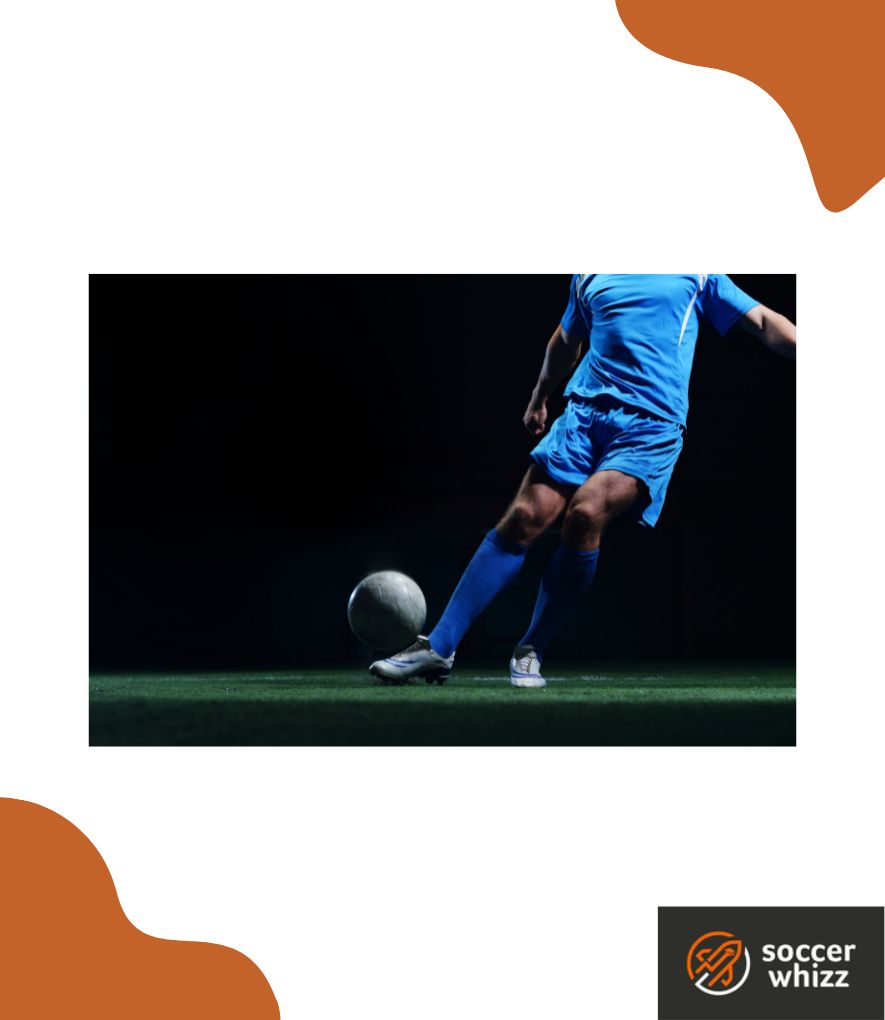The knuckleball is a spellbinding and unpredictable technique that has captivated the hearts of fans and perplexed even the most skilled players in the sport.
Unlike traditional shots that rely on spin and curve, the knuckleball is characterized by its lack of rotation, resulting in a mesmerizing and wobbly trajectory that can bewilder even the most seasoned goalkeepers.
Essentially, the term can be defined in the following manner…
The knuckleball is jargon used for a type of shot executed by a soccer player that is devoid of topspin, backspin or sidespin that would see the ball curve towards a particular direction. Instead, a knuckleball strike has an erratic and unpredictable trajectory that is difficult for goalkeepers to save.

In this article, we delve into the intricacies of the knuckleball technique.
We explore the physics behind its flight path, the skills required to execute it, and the mental fortitude needed to embrace its inherent unpredictability.
We also delve into the stories of players who have left an indelible mark on the game with their mastery of the knuckleball, showcasing its profound impact on matches and the artistry it brings to the sport.
So, let’s begin!
What is the physics behind the knuckleball shot in soccer?
The knuckleball shot in soccer is a fascinating display of the principles of physics at work.
Unlike traditional shots that rely on spin and curvature, the knuckleball shot derives its unique flight characteristics from a lack of rotation on the ball.
This absence of spin creates an unpredictable and wobbly trajectory, making it challenging for goalkeepers to anticipate and react to the shot.

When a soccer ball spins, the air flowing around it creates a phenomenon known as the Magnus effect.
The Magnus effect causes the ball to curve in the direction of the spin, resulting in predictable trajectories.
However, in the case of a knuckleball shot, the ball is struck in such a way that it has minimal or no spin, thus nullifying the Magnus effect.
Without spin, the airflow over the ball is disrupted, creating turbulent flow patterns.
These turbulent flows create areas of low pressure on one side of the ball and high pressure on the other.
As a result, the ball experiences uneven forces, causing it to move erratically in the air.
The irregular flight path of a knuckleball shot can be attributed to three main factors:
- wake turbulence;
- drag; and
- the seam effect.
Wake turbulence refers to the swirling air patterns created behind the ball as it moves through the atmosphere.
This turbulence disrupts the smooth airflow, contributing to the ball’s unpredictable movement.
Drag, the resistance experienced by the ball as it moves through the air, also plays a role in the knuckleball’s flight.
The turbulent flows created by the lack of spin increase drag on the ball, further influencing its trajectory.
Additionally, the seams on the surface of the ball contribute to the knuckleball effect.
The seams can disrupt the airflow, leading to variations in pressure distribution and causing the ball to veer off course unpredictably.
The combination of wake turbulence, increased drag, and seam effects result in a knuckleball shot that moves in an irregular, zigzag-like manner, making it extremely challenging for goalkeepers to anticipate its trajectory and properly position themselves for a save.
References:
- https://www.ncbi.nlm.nih.gov/pmc/articles/PMC9182928/;
- https://www.sciencedaily.com/releases/2012/11/121116085201.htm;
- https://www.eurekalert.org/news-releases/809699; and
- https://www.inverse.com/article/19897-2016-rio-olympics-physics-knuckleball
Who invented the knuckleball striking technique?
While the exact originator of the knuckleball technique remains somewhat uncertain, its development is often attributed to Edward Cicotte as early as 1908.

Cicotte’s unique approach involved gripping the ball between his knuckles, earning him the name “Knuckles” and subsequently bestowing the technique with the name “knuckleball.”
However, it was in the 1950s that the knuckleball technique in soccer truly gained prominence.
Renowned Brazilian soccer star Didi is credited with inventing the technique, initially known as the “folha seca” or “dry leaf” kick.

Over time, this kick evolved and came to be recognized as the knuckleball, both in free kicks and general play.
Notably, players like Cristiano Ronaldo and Juninho have showcased exceptional mastery of the knuckleball technique, solidifying their reputations as skilled exponents of this fascinating and unpredictable kicking style.
How do you kick a knuckleball in soccer?
Mastering the art of shooting a knuckleball in soccer involves following a comprehensive five-step guide.
By adhering to these steps, you can enhance your technique and increase your chances of executing a successful knuckleball shot.
1. Approaching the ball
During the run-up, give yourself the freedom to choose your approach.

However, it is generally recommended to take 4 to 6 steps away from the ball, with a slight shift to the left or right, depending on your preferred shooting foot.
A tip from Cristiano Ronaldo is to run up to the ball on your toes, preparing yourself to strike the ball with precision.
2. Positioning your supporting foot
As your kicking foot prepares to make contact, position your supporting foot approximately 15 to 20 cm to the side of the ball.
This positioning provides stability and balance during the shot.
3. Striking the ball
To minimize spin on the ball, aim to make contact just below its center.
You can take cues from Cristiano Ronaldo, who used to face the valve of the ball to determine the precise center.

However, this step is optional.
Make sure your foot makes contact between the instep and the middle of your ankle joint. Keep your ankle firm and locked to prevent injury.
4. Maintaining proper body posture
Maintaining the right body posture is crucial for a successful knuckleball shot.

Avoid leaning back excessively, as it can result in excessive ball flight.
Instead, keep your posture straight, with a slight forward lean as you make contact.
This posture allows for better control over the shot’s height.
5. Executing the follow-through
The follow-through plays a vital role in the trajectory and success of your knuckleball shot.
After striking the ball, move your body in the direction of the shot, transferring momentum to the ball.
However, ensure that your kicking leg does not travel forward with the ball more than 15 to 20 cm.
Finally, aim to settle your body in one or two steps to maintain balance and readiness for the next play.
Which players have scored the best knuckleball goals in soccer games?
Here are some classic examples…
Juninho Pernambucano
In one of his many impressive displays of skill, Juninho, the Brazilian maestro, showcased his mastery of the knuckleball technique during his time at Lyon.
With a powerful strike, he unleashed a knuckleball shot that defied all expectations, leaving both the goalkeeper and defenders bewildered.
The ball soared through the air, dancing and dipping unpredictably before finding the back of the net, leaving spectators in awe of Juninho’s extraordinary ability to manipulate the ball’s flight.
Here’s a look at one particular knuckleball goal (at the four minute mark against AC Ajaccio) that left spectators in awe of his ability:
Clarence Seedorf
During his illustrious career, Clarence Seedorf, known for his versatility and technical prowess, delivered a memorable knuckleball goal while representing Real Madrid.
With impeccable precision, he struck the ball with the knuckleball technique, producing a mesmerizing flight path that confounded the opposition’s goalkeeper.
As the ball swerved and dipped, it sailed past the outstretched arms of the helpless keeper, sealing the moment with a sublime display of Seedorf’s finesse and command over this unique shooting technique.
Here’s footage of that particular strike:
Elano
Elano, the Brazilian midfielder with a flair for the extraordinary, etched his name in soccer history with a remarkable knuckleball goal during his time at Santos.
With great composure, he executed a knuckleball shot from distance, sending the ball hurtling towards the goal with incredible speed and unpredictability.
As the opposition’s goalkeeper desperately tried to anticipate its trajectory, the ball swerved and dipped at the last moment, leaving him stranded and spectators in awe of Elano’s mastery of the knuckleball technique.
Have a look at this one below from the two minute and 34 second mark:
Can you perform the knuckleball in FIFA?
Yes, it is in fact possible to score a knuckleball goal in FIFA video games.
So many content creators of the popular video game put out tutorial style content on YouTube showing exactly how this can be done.
Take a look at the following clip as an example:
FIFA games aim to replicate the real-life physics and mechanics of soccer, including shooting techniques like the knuckleball.
By following the appropriate button combinations or controls, you can execute a knuckleball shot in FIFA:
“After you press the shooting button, your player will begin to run up towards the ball. In that 1 to 2-second time frame, you need to flick your right analog stick down > up > down and hold the analog stick down until your player kicks the ball.”
Source – Diamond Lobby
Timing, player attributes, and skill level can also affect the success of the shot.
Just like in real-life soccer, scoring a knuckleball goal in FIFA requires precision, practice, and an understanding of the game’s mechanics.
Concluding thoughts
Ultimately, the knuckleball is a fascinating and unpredictable technique that has captivated soccer enthusiasts worldwide.
This unique shooting style, characterized by its lack of spin and erratic flight path, has the potential to deceive goalkeepers and leave spectators in awe.
Although its exact origins may be debated, the knuckleball has seen notable players like Edward Cicotte, Didi, Cristiano Ronaldo, and Juninho master its execution, further solidifying its place in soccer history.
For further reading on this topic, you can check out whether soccer’s greatest player of all time can strike the ball using such a technique, as we have a detailed article on whether Lionel Messi can perform a knuckleball shot.
If you enjoy the content that I create and would like to buy me a coffee, then I’d really appreciate it!
Any money that I earn through this donation will be re-invested into more content for this website.
Additionally, by sending in a donation you’ll also receive a copy of my recently released 190+ page eBook on Soccer Ball Care, as well as be subscribed to our mailing list where you’ll be regularly informed on the latest developments concerning the Soccer Whizz blog.
- Future Icons: Europe’s Emerging Midfield Maestros Set for Glory - December 4, 2023
- Kickstarting a Revolution: How Soccer Transformed the United States Over the Last Four Years - October 7, 2023
- 4-1-4-1 Soccer Formation [Analysis] - September 23, 2023

